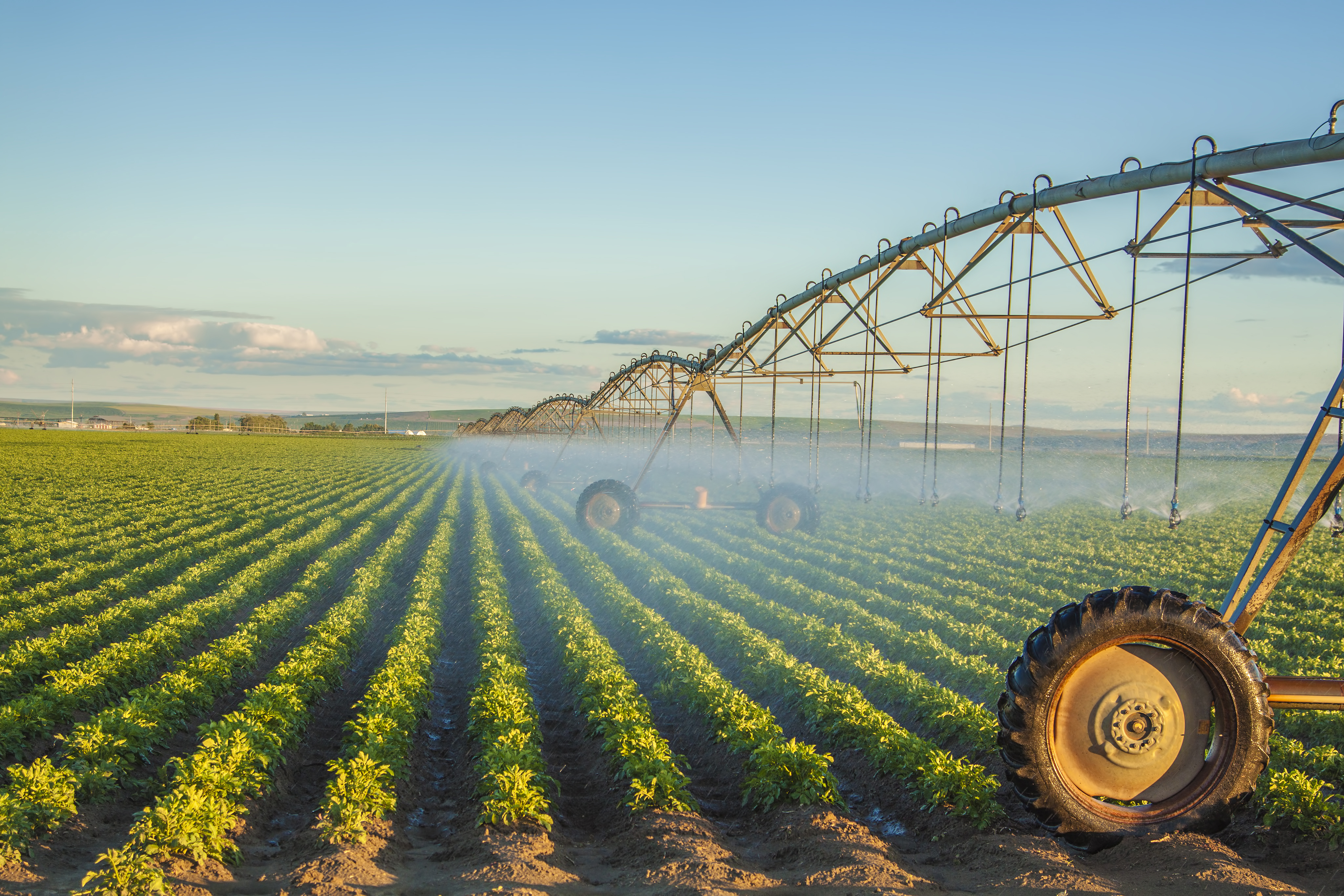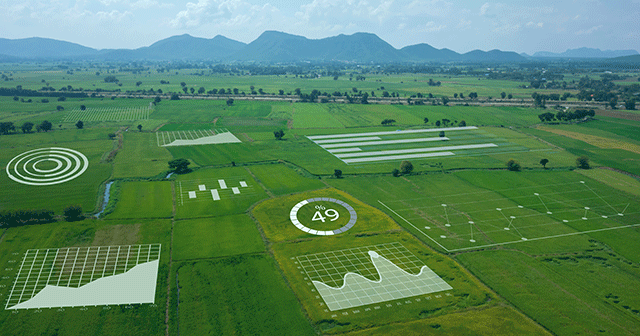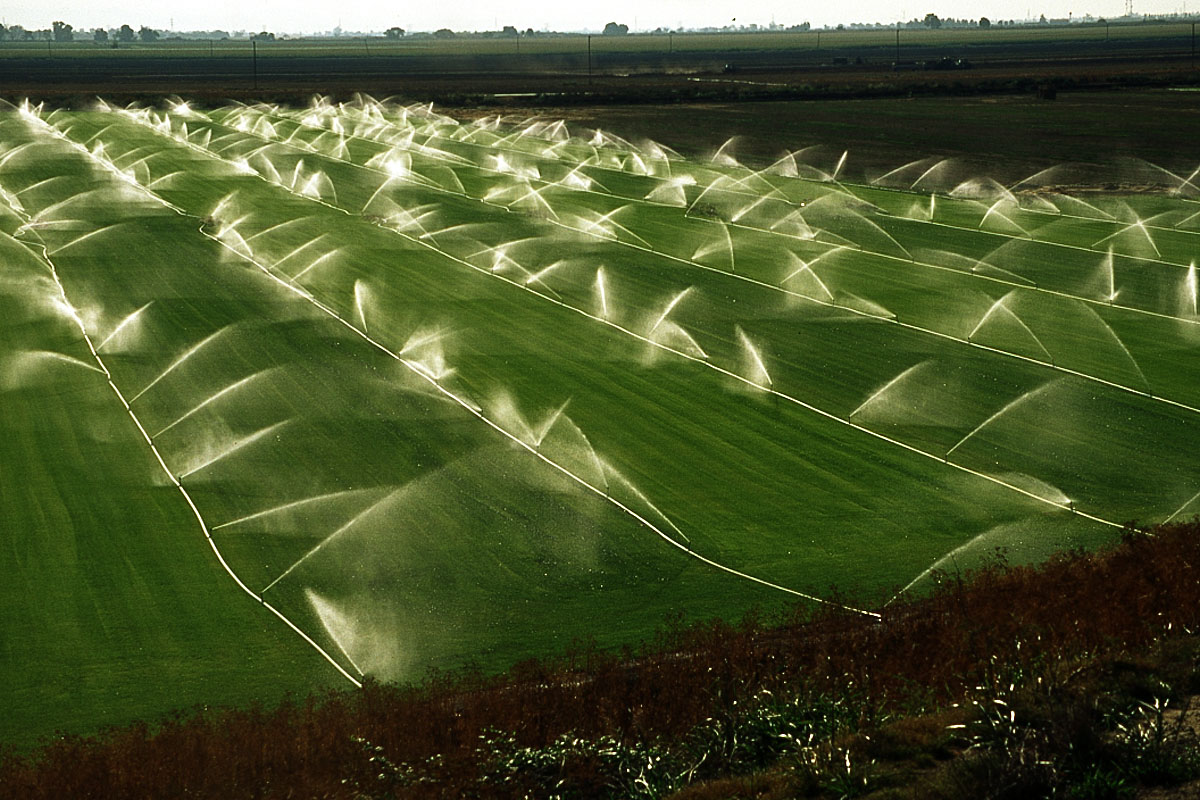This article was published as a part of the Data Science Blogathon.
Introduction
Agriculture plays a crucial role in feeding the growing global population; however, farmers are facing increasing challenges in crop yields due to climate change, water scarcity, and the need for sustainable farming practices. According to the Food and Agriculture Organization of the United Nations (FAO), crop yields need to increase by 60% to meet the projected demand for food by 2050. Farmers are turning to new technologies such as Artificial Intelligence (AI) and Computer Vision (CV) to address these challenges to improve crop yields.

AI and CV technologies can provide real-time data and insights on crop growth, soil moisture, and weather conditions, which can help farmers make informed decisions about planting, irrigation, and fertilization. For instance, using computer vision to monitor crop growth can help farmers identify issues such as disease and pest infestation early on, allowing them to take action before significant damage is done.
How Will AI Help in Agriculture?
In addition, precision farming, which uses AI and Computer Vision to optimize planting, irrigation, and fertilization based on real-time data, can lead to significant benefits such as reducing water usage, increasing crop yields, and reducing the use of pesticides. According to a Precision Agriculture Development Trust report, precision farming can increase crop yields by up to 30%.
Furthermore, the use of drones and satellite imagery in conjunction with AI and CV can provide farmers with valuable data on crop health and growth, allowing them to make more informed decisions about their farming operations. For example, a study by the University of California, Davis, used drones equipped with computer vision to gather data on crop health and growth and found that the technology was able to detect early signs of disease and pest infestation, leading to a decrease in the use of pesticides and an increase in crop yields.
Moreover, AI and CV can also be used to predict weather conditions and soil moisture levels, which can help farmers plan for the planting and irrigation of their crops. For instance, a start-up in India is using AI to predict weather conditions and soil moisture levels to optimize irrigation and increase crop yields by up to 30%.
AI and Computer Vision for Crop Monitoring
One of the key ways that AI and computer vision technologies can be used to improve crop yields is by monitoring crop growth and identifying issues such as disease and pest infestation. By using computer vision to analyze images of crops, farmers can quickly identify issues such as leaf discoloration or wilting, which can be early signs of disease or pest infestation.

For example, a company called Blue River Technology has developed a system that uses computer vision and machine learning to monitor crops in real-time and identifies issues such as pests, disease, and nutrient deficiencies. The system uses a camera mounted on a tractor to take images of the crops, and an AI algorithm then analyzes the images to identify issues. Here’s a python code snippet that demonstrates how computer vision and machine learning can be used to monitor crop growth:
0.5:
print("Pest infestation detected")
elif predictions[0][1] > 0.5:
print("Disease detected")
else:
print("No issues detected")" data-snippet-id="ext.f1dc4d07deee7ac0d51764e584a8d858" data-snippet-saved="false" data-codota-status="done">import cv2
import numpy as np
from keras.models import load_model
# Load the trained model
model = load_model('crop_monitoring_model.h5')
# Capture images of the crops using a camera
cap = cv2.VideoCapture(0)
ret, image = cap.read()
# Pre-process the image
image = cv2.resize(image, (256, 256))
image = np.expand_dims(image, axis=0)
# Use the model to predict if there are any issues with the crops
predictions = model.predict(image)
# Analyze the predictions to identify issues such as disease or pest infestation
if predictions[0][0] > 0.5:
print("Pest infestation detected")
elif predictions[0][1] > 0.5:
print("Disease detected")
else:
print("No issues detected")
This code uses a pre-trained machine learning model to predict if there are any issues with the crops, such as pest infestation or disease. A camera captures an image of the crops, which is then pre-processed, and passed through the model to make predictions. The model then analyzes the predictions to identify any issues with the crops.
By using computer vision and AI in this way, farmers can quickly identify issues with their crops and take action before significant damage is done. This can lead to increased crop yields and more efficient use of resources such as pesticides and fertilizers.
The Recent Trend: Precision Farming
Another key way that AI and computer vision technologies can be used to improve crop yields is through precision farming. Precision farming uses real-time weather, soil moisture, and crop health data to optimize planting, irrigation, and fertilization. By using AI and computer vision to analyze this data, farmers can make more informed decisions about their farming operations, leading to increased crop yields and more sustainable farming practices.

For example, a company called Taranis has developed a system that uses computer vision and machine learning to analyze aerial images of crops to identify issues such as disease, pests, and nutrient deficiencies. The system then uses this information to optimize fertilization and irrigation, leading to increased crop yields and reduced use of resources.
Here’s a python code snippet that demonstrates how computer vision and machine learning can be used to optimize irrigation in precision farming:
import cv2
import numpy as np
from keras.models import load_model
# Load the trained model
model = load_model('precision_farming_model.h5')
# Capture images of the crops using a camera or drone
cap = cv2.VideoCapture(0)
ret, image = cap.read()
# Pre-process the image
image = cv2.resize(image, (256, 256))
image = np.expand_dims(image, axis=0)
# Use the model to predict the optimal amount of irrigation for the crops
predictions = model.predict(image)
# Use the predictions to control irrigation
irrigation_amount = predictions[0][0]
This code uses a pre-trained machine learning model to predict the optimal amount of irrigation for the crops based on the captured images; the model analyses the images of the crops and makes predictions based on that, this prediction are then used to control the irrigation amount. This can help farmers use the right amount of water for the crops, reducing waste and increasing crop yields.
Using AI and computer vision to optimize planting, irrigation, and fertilization, precision farming can lead to significant benefits such as reducing water usage, increasing crop yields, and reducing the use of pesticides.
Challenges and Limitations
While AI and computer vision technologies have the potential to revolutionize the way we grow crops and improve crop yields, there are also challenges and limitations to consider.
- One of the main challenges is the high cost of these technologies, which can be prohibitive for small farmers.
- Additionally, some regions lack data on crop growth and weather conditions, which can limit the effectiveness of AI-based solutions.
- Another challenge is privacy concerns; for instance, the use of drones and satellite imagery to gather data on crop health and growth raises privacy concerns as it can be used to track farmers’ activities; this is a critical issue that needs to be addressed.
Here’s a python code snippet that demonstrates how to protect the privacy of farmers by adding a blur effect to images captured by a drone:
import cv2
# Load the image
image = cv2.imread("image.jpg")
# Apply a blur effect to the image
image = cv2.GaussianBlur(image, (25, 25), 0)
# Save the image
cv2.imwrite("image_blurred.jpg", image)
This code takes an image as input, applies a blur effect to it using the GaussianBlur function, and saves the result as a new image. This can protect farmers’ privacy by making it difficult to identify individuals or specific locations in images captured by drones.
Case Studies and Real-World Examples
To better understand the potential of AI and computer vision technologies in agriculture, it’s helpful to look at real-world examples of how these technologies are being used to improve crop yields.
One example is the use of precision farming in California’s Central Valley. A study by the University of California, Davis found that precision farming, which uses real-time data on weather, soil moisture, and crop health to optimize planting, irrigation, and fertilization, can increase crop yields by up to 30%. The study also found that precision farming can reduce water usage by up to 40%.

Another example is the use of computer vision and AI in agriculture to monitor crop growth in India. A start-up called CropIn Technology uses AI to predict weather conditions and soil moisture levels, which helps farmers plan their crops’ planting and irrigation. The company reports that farmers who use their technology have seen crop yields increase by up to 30%.
Here’s a python code snippet that demonstrates how to use a pre-trained machine-learning model to predict crop yields:
import pandas as pd
from sklearn.ensemble import RandomForestRegressor
from sklearn.metrics import mean_absolute_error
# Load the dataset
data = pd.read_csv("crop_yields_data.csv")
# Split the data into training and testing sets
train_data = data.sample(frac=0.8, random_state=1)
test_data = data.drop(train_data.index)
# Define the features and target variable
features = ["temperature", "precipitation", "soil_moisture"]
target = "yield"
# Train the model
model = RandomForestRegressor(n_estimators=100, random_state=1)
model.fit(train_data[features], train_data[target])
# Make predictions on the test data
predictions = model.predict(test_data[features])
# Calculate the mean absolute error
mae = mean_absolute_error(test_data[target], predictions)
print("Mean Absolute Error: ", mae)
This code uses a pre-trained machine learning model to predict crop yields based on temperature, precipitation, and soil moisture data. This can be used to help farmers make more informed decisions about planting and irrigation, leading to increased crop yields.
In conclusion, real-world examples such as precision farming in California, crop monitoring in India, and pest detection in Australia demonstrate how AI and computer vision technologies are being used to improve crop yields and make farming more sustainable. These examples also show the potential for AI and computer vision to increase crop yields by up to 30%, reduce water usage by up to 40%, and detect pests and diseases early on. However, it’s important to keep in mind that these technologies can also be costly and raise privacy concerns, which need to be addressed. Additionally, the use of AI and computer vision in agriculture is still relatively new, and more research is needed to fully understand its potential and limitations.
Conclusion
Artificial Intelligence and Computer Vision technologies have the potential to revolutionize the way we grow crops and improve crop yields. By using computer vision to analyze images of crops, farmers can quickly identify issues such as leaf discoloration or wilting, which can be early signs of disease or pest infestation. Precision farming uses real-time weather, soil moisture, and crop health data to optimize planting, irrigation, and fertilization. This can lead to increased crop yields and more sustainable farming practices.
However, it is also important to keep in mind the challenges of these technologies, such as high costs, lack of data, and privacy concerns. Additionally, ethical and societal implications should also be considered when developing AI in Agriculture.
The takeaways from this blog can be:
- AI and Computer Vision technologies have the potential to improve crop yields, reduce water usage and make farming more sustainable
- Precision farming and crop monitoring are key examples of how these technologies are being used in the field
- There are also challenges and limitations to these technologies, such as high costs and privacy concerns, that need to be addressed
- AI in agriculture is still relatively new, and more research is needed to fully understand its potential and limitations.
The media shown in this article is not owned by Analytics Vidhya and is used at the Author’s discretion.





